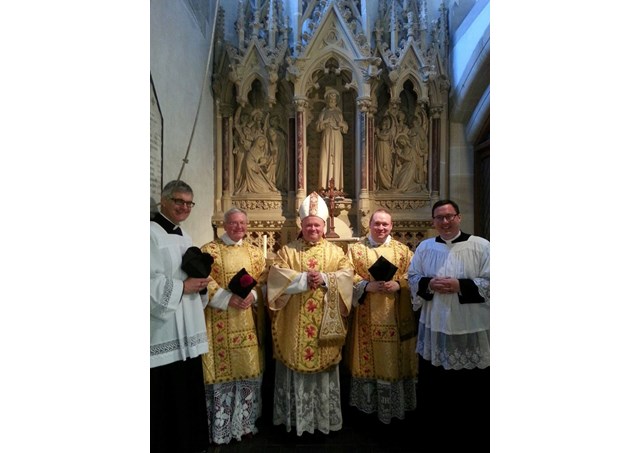
Celebrating the Apostle of the English at Ramsgate

(Vatican Radio) Many countries in Europe celebrate their founding saints with feasts, shrines, sacred stories, and of course, public holidays. Some of these feasts have international appeal, such as St Patrick’s day. However, when it comes to England, it would appear there’s a gaping hole in its national consciousness concerning its Christian roots. Nevertheless, it was not always so. Prior to the Reformation, pilgrims flocked to the shrine of the founder of the English Church, St Augustine, in the primatial see of Canterbury.
St Augustine became the first Archbishop of Canterbury in 597. A Benedictine monk from Rome, he is hailed as the “Apostle of the English”. But how did an Italian monk end up as the first Metropolitan Archbishop of England? At the time, England was regarded as a far-off and dangerous land in the north-west corner of the former Roman Empire. Although Christianity had taken hold during the latter years of that empire, and had survived in pockets; ostensibly, England was by Augustine’s day a collection of pagan kingdoms, having been invaded and settled by the Anglo-Saxons one hundred and fifty years before.
In the late sixth century, Pope St Gregory the Great noticed some slave children in the Roman market. Upon enquiring who these children might be, he was told, “Angles” (as the English were then known). His reply was clear: “Non Angli, sed angeli sunt!” (They are not Angles, but angels). From that moment, St Gregory was intent upon founding a mission to England, and the prior of St Andrew’s monastery in Rome, Augustine, was chosen to be that missioner.
Having heard fearful tales about the barbarity of the English as he travelled north through Gaul (modern-day France), he finally landed on the Isle of Thanet in 597. At a meeting in Ebbesfleet with the principal ruler of the Anglo-Saxons, King Ethelbert, and his Christian queen Bertha, Augustine first proclaimed the gospel to the English. Augustine and his group of forty monks were invited back to Canterbury and through their holy lives, miracles and preaching converted thousands of souls. King Ethelbert was also baptized and allowed the monks to establish a cathedral church and monastery in Canterbury. There began the long and fruitful Christian history of the English people. From Augustine’s foundation in Canterbury, missionaries were sent to establish the Christian faith in London, Rochester and York.
Augustine probably died on 26 May 604 and was soon venerated as a saint, his shrine becoming a place of pilgrimage for nearly a thousand years. However, as with shrines throughout the kingdom, it was destroyed in 1534 on the orders of King Henry VIII, and through the agency of his Lord Chancellor, Thomas Cromwell.
On 1 March 2012, the Shrine of St Augustine was restored on the Isle of Thanet - near to where the saint first landed - at Pugin’s Church of St Augustine, Ramsgate. His feast day falls on 26 May, and from 23 to 31 May, Ramsgate will be celebrating the memory of its “oldest celebrity” with a wide variety of activities and liturgies.
Phil Andrews talks to Fr Marcus Holden, Parish Priest of Ramsgate and Rector of the Shrine, about its past, and about its future.
Listen here
Links
St Augustine's Shrine Church, Ramsgate, Kent (UK)
The Friends of St Augustine's Shrine
The Church in England and Wales
| All the contents on this site are copyrighted ©. |


